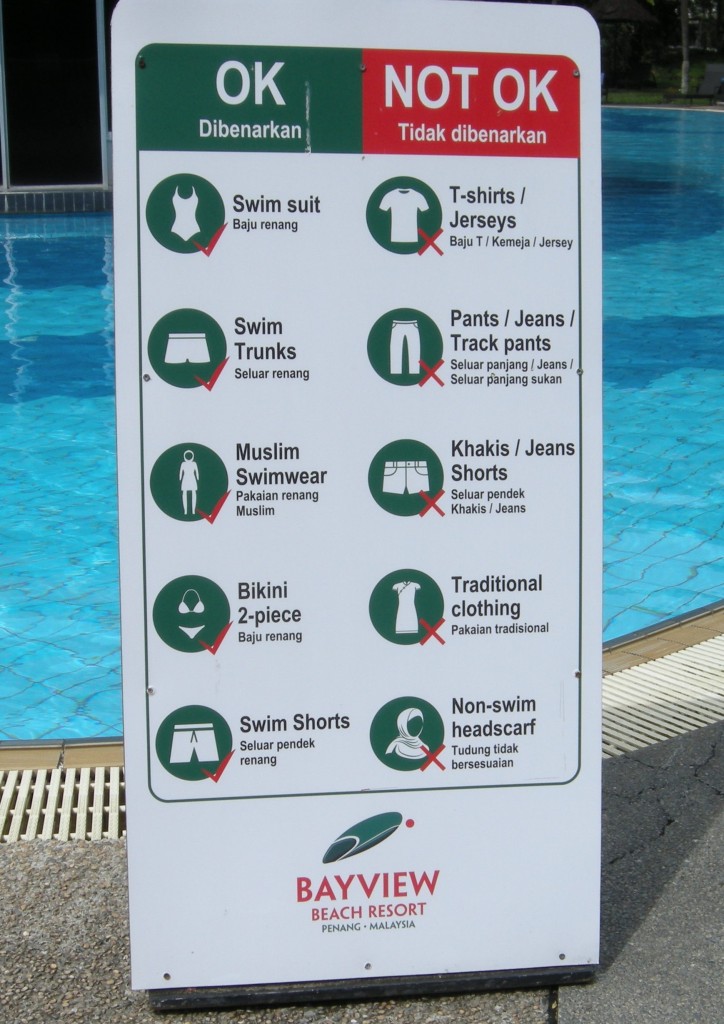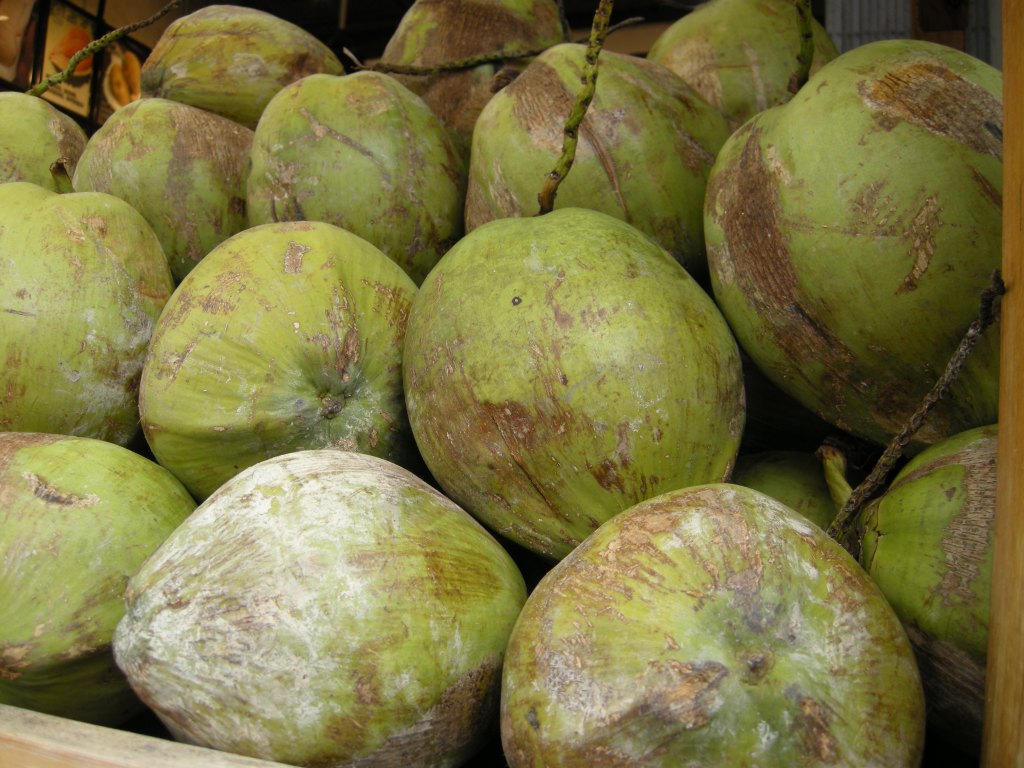I reluctantly left the grand E & O hotel and spent my last two days in Penang at the Bayview Beach Resort at Batu Ferringhi beach. Both the hotel and the beach were a letdown.
But let’s start with the lemonade, not the lemons.

Whereas the E & O was a luxury destination for international travelers, the Bayview was filled with local families, enjoying a school holiday week. And so I had a non-stop view of local culture, a chance to observe bodies at rest and at play.
A sign at the pool brought me up short. The dress code was complex. Bikinis and “Muslim swimwear,” yes. “Traditional clothing” and “non-swim headscarf,” no.

And indeed, there were a few Caucasian women in bikinis, whom nobody hassled. There were burkinis everywhere, polyester Muslim garb which covered everything except a woman’s face, hands, and feet. The Chinese and Indian women mostly wore shorts and t-shirts (long-sleeved for the Chinese, short-sleeved for the Indians); a few wore leggings, while some twenty-somethings wore Western-style one-piece swimsuits. The Chinese and Indian men either wore t-shirts or were bare-chested.
As I’ve noted before, Malaysia’s three distinct ethnic groups don’t mix in any meaningful ways. Their national legislature is even apportioned by race. And so one could observe contrasting genetics between the Chinese, Indian, and Malay people.
I won’t say this is true around the world, but when comparing the three groups in Malaysia:
~ Indians have broader feet. The men have much bigger calves;
~ A huge percentage of Chinese wear glasses;
~ Malay and Chinese women have much smaller breasts;
~ None of the three groups has people with well-developed shoulders.
And in the social realm:
~ None of the groups display much physical affection in public, except toward children;
~ The Chinese shuffle. The Indians walk straight ahead. The Malays walk slowly;
~ Over two days, observing some 300 people, I didn’t see a single Malay actually swim.
~ In all three groups, adults rarely run. Adults typically call to others (whether a child or adult) rather than walk over to them to speak.

Walking on the coarse sand of the narrow beach, I encountered four young Malaysian women gabbing and having a picnic. I took off my sunglasses and walked toward them.
They were celebrating one of their birthdays. They were all 23, friendly and full of energy. I asked to take their photos, for which they happily posed. And they took mine, which they thought was hilarious. I asked about their hijabs, which they discussed quite openly. They had each started wearing one at their mother’s instruction, between the ages of 7-9.
I asked them about their hair hidden underneath, which each reported was longer than shoulder-length. “So a big surprise for your husband,” I said. They agreed. “And maybe other surprises,” I gently said, tactfully gesturing to their baggy outfits. “Yes,” they giggled. “Surprise is good, that’s the wisdom of our faith,” said one. “Unless it’s unhappy surprise,” I responded gently.
These young women were bouncy and pleasant, but I couldn’t shake the image of them on the day they were first wrapped in a hijab. It’s a proud day for some kids, a confusing day for others. In my Western mind’s eye, it’s also the last day that their shoulders or shins will ever feel the sun’s caress. Some will feel honored by the responsibility that men don’t have. Others will feel burdened. None will experience a choice.
That’s what I wish for all people: the caress of choice.
Thank you, reader, for travelling with me.



Marty, I read and thoroughly enjoyed each of your blogs from Malaysia. Your observations about people and culture were especially interesting to me. Having been to KL and other parts of Malasia several times, I was very impressed that your psychologist’s eyes and brain allowed you to see and understand a lot more than I did. And you are a terrific writer with clear sentencing and perfect grammar. I am the Grammar Police Chief in my family. Would you like to join my Grammar Police Force? Ira Ira